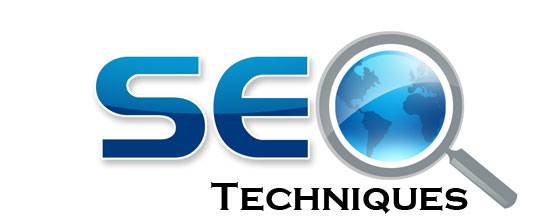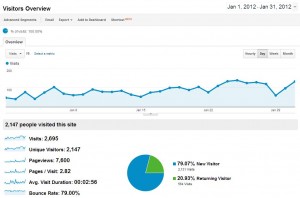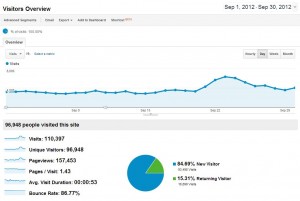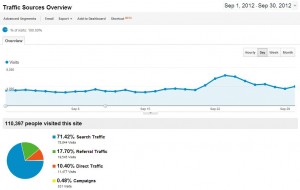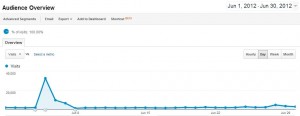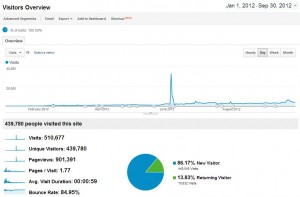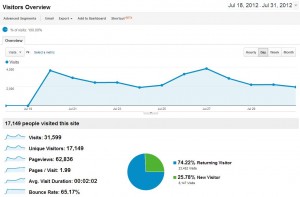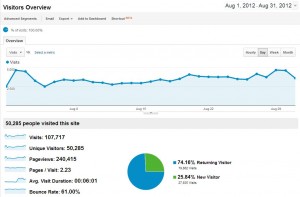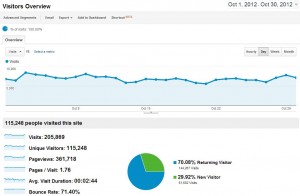Unite

Unite is a sleek and modern free WordPress theme with fully responsive flat design. It is developed using the newest Bootstrap 3 and designed for minimalism and user-friendliness. With this fully customizable theme, you are able to tweak some elements in your framework such as footer, navigation menu, fonts and a lot more. This modern theme is suitable for wedding websites/blogs but can also look great on other creative sites that need image-centric design. Unite theme is a work of genius that will make your wedding or any other website stand out.
MORE INFO / DOWNLOAD DEMOSimple Business Theme

Simple Business is a sleek, minimal WordPress business theme designed to provide a clean canvas for almost any website project. The theme is fully responsive and built on the Bootstrap 3.x framework in valid HTML5. The powerful theme options panel allows you to modify nearly all aspects of your website. Choose from over a hundred fonts available in thirty font settings. Perfect your typography with weight, color and style options for each of those thirty settings. Modify dozens of color and design options to truly take control of your website’s look and feel. The Simple Business theme offers a static business frontpage layout with high-impact banners, featured pages, and page content, or use the modern blog layout option. Most importantly, you’ll find that the Simple Business theme is a powerful platform on which you can build a beautiful website for yourself or a client.
MORE INFO / DOWNLOAD DEMOSoliloquy Theme

The Soliloquy theme is high-impact, photo-friendly business or blogging WordPress theme. With the Soliloquy theme you will not be locked down. Bloggers will enjoy the super flexible, uber high-contrast blog layout that puts your full-width photography and images front and center. If you’re looking for a more traditional business website layout, that’s available as well, with banners, featured pages, and page content. Take advantage of numerous widget locations including in the left and right in the header and across four columns in the footer. The powerful theme options panel offers you the ability to choose from over a hundred hand-picked fonts, modify the themes colors and shadows, and take full control using custom CSS. The Soliloquy theme will make your business website or blog shine.
MORE INFO / DOWNLOAD DEMOInkness

Inkness is a lovely free WordPress Theme with trendy style from InkHive. This theme is built with the latest Twitter Bootstrap technology and incorporated with loads of awesome features. It has a fully responsive and flexible layout design. It works efficiently on all types of handheld device, which includes phones, iOS 7 tablets and Macs. Inkness’ framework offers a minimalist design that provides more space for your content. The theme comes with vast theme options, responsive slider, 4 page layouts, tons of font options, terrific CSS transition effects, clean, HTML5 design structure for better SEO and a lot more! This theme gives you an option to upgrade to a pro version to turn on more advanced features. With the right images and proper theme customization, Inkness can be used as the perfect framework for any kind of blog, whether it is movies, business, portfolio and so on.
MORE INFO / DOWNLOAD DEMOFullby

Does this theme look familiar to you? Well, that is because it was designed after Twenty Fourteen. Even at first look, you’ll love the appearance of this new free magazine-type theme for WordPress. The theme is fully responsive, based on Bootstrap and features a grid style. This fabulously light theme includes only two images and can be edited via CSS. This free WordPress theme provides various column layouts and features a powerful platform for your content. If you want to include your latest post to the featured section, simply mark the “featured” option in your post. It also comes with gallery and video support that you can use for creating an engaging website. Furthermore, Fullby is a fluid theme that makes your website accessible and adaptable on any screen size.
MORE INFO / DOWNLOAD DEMOWP Knowledge Base Theme

WP Knowledge Base Theme is an open source knowledge base theme designed particularly for WordPress. This theme is uses Twitter Bootstrap 3.0 framework for delivering UI components and other open source elements for rendering an excellent framework for your knowledge base theme. It allows you to run numerous knowledge base with categories and posts and nothing else. This theme allows includes functional features that provide superior user experience for your customers. You can also affix custom images and icons to spruce up the appearance of your site. This theme is actually created with a streamlined Knowledge Base and Support Forum.
MORE INFO / DOWNLOAD DEMOArcade Basic

Arcade Basic’s broad and prominent header image will immediately catch the attention of anyone who visits your website. This unique website is a fully responsive HTML5 theme. Its theme customizer allows you to customize your page layout, header image, site width and more. Create inimitable post with one of the eight supported post formats like image, videos, audio, quote, link and gallery. Include JetPack to your site to show off your galleries on a tiled view and jQuery carousel. This theme also allows you to set up a forum since it is bbPress & BuddyPress ready. The theme is also built on Bootstrap 3, SASS and Compass. The theme also comes with an extensive font options to improve typeface readability. Arcade Basic is perfect for creating an outstanding landing page apt for photographers, businesses, and bloggers.
MORE INFO / DOWNLOAD DEMOStanleyWP

Stanley is another noteworthy WordPress Theme produced by BlackTie. Stanley adapts the finest Twitter Bootstrap technology with minimal integration of color. Just because it is free doesn’t mean it is substandard or inferior in terms of theme features. This modest WP theme actually offers heaps of built-in features like drag and drop homepage builder, theme options panel, portfolio post types, three page templates, Font Awesome 4 and fluid layout design. This theme is custom-built to let you showcase your work to the world in a straightforward way. It is perfect for blogging theme and boosting personal brand. This theme is designed with freelancer web designers and creative people in mind.
MORE INFO / DOWNLOAD DEMORokophoto Lite

Rokophoto Lite is a sleek and modern photography WordPress theme well suited for travel, nature, wedding, and other photography blogs and portfolios. Just like all other theme on this collection is is built based on Bootstrap 3. Rokophoto theme features fancy page loading effects that makes smooth transitions between pages that makes your website to load faster but don’t get me wrong, this theme is fast but this makes it look even faster. It is SEO friendly and will make your photographs easy to find on Google and other search engines. Smooth transitions are not just for page transitions but also on scroll, so your website will look professional and buttery. While this theme is completely free it has unique feel and look that you can usually find only on premium themes. Rokophoto Lite has everything to improve your online presence as hobby or professional photographer.
MORE INFO / DOWNLOAD DEMOGovPress

This theme is fashioned to provide a solid framework for government sites at a zero price! This purposeful theme includes handy features like color customization options, custom headers, optional icon navigation menu and multiple widget areas. It also provide extensive documentation and suggested plugins can be found at govpress.co. GovPress is mobile and computer friendly to make sure that your target consumers reach your website.
MORE INFO / DOWNLOAD DEMORomangie

Romangie is a stylish and minimalist WordPress theme that can be used for free. This retina-ready theme ensures that your website will look good on any screen size. It is built based on Bootstrap Framework to guarantee wonderful browsing experience, no matter what device your visitor is using. Romangie’s preference for simpler design means that your website will sustain considerable speed but put more emphasis on your content as well. Its exterior may look plain and simple but it is actually loaded with great features such as nice navigation menus, galleries, commenting, Twitter embedding, categories and a calendar.
MORE INFO / DOWNLOAD DEMOBlain

Blain is a plain but elegant theme designed by InkHive. It is fully responsive and built with Twitter Bootstrap. This meek theme comes with massive customization options and features that make website development child’s play. Blain is packed out with remarkable features such as powerful admin options panel, 4 page layouts, responsive layout, Font-Awesome web icons, slider, Retina ready, Social network icons (SocioCons), RTL translation ready, GPL license and much more. In addition, Blain brags its minimalist design yet responsive slider, customizable header and footer, four page layouts and custom widgets for displaying recent posts and thumbnails. Blain is a wonderful framework for all kind of blogs showing off creative and informative posts.
MORE INFO / DOWNLOAD DEMOAdament

Adament is a free responsive WordPress theme designed based on Bootstrap 3 framework. This theme is ideal for photograpy related website. Its homepage is integrated with a full width slider and jQuery animated title and space for brief caption for every slide. The theme runs smoothly on different types of modern devices and supports most general widgets. The theme includes a variety of basic theme options. The usually necessitates the installation of some premium plugins to function proficiently. You will receive a notification on the admin panel regarding the required plugin that has to be installed.
MORE INFO / DOWNLOAD DEMORevera

Revera applies the K.I.S.S principle on all aspects of its theme design. It is also built based on the Bootstrap framework. It also incorporates the most functional bootstrap features so you may use it on various kinds of websites. This free bootstrap theme allows you to utilize images, widgetized sidebar and footer, menu, custom homepage template, portfolio page template, a special place for banner ads, theme option page and a lot more.
MORE INFO / DOWNLOAD DEMO